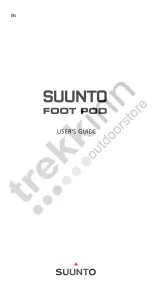
Global mode
246
Creating a user arpeggio
pattern
About user arpeggio patterns
The patterns that can be selected on the M50’s arpeggiator
are called “arpeggio patterns.” There are two types of
arpeggio patterns: preset arpeggio patterns and user
arpeggio patterns.
Preset arpeggio patterns:
There are five patterns; UP, DOWN, ALT1, ALT2, and
RANDOM.
The operation of these patterns is fixed, and cannot be
edited.
User arpeggio patterns:
There are 1028 patterns - U0000(INT)–U1027(USER) - which
can develop chords or phrases in a wide variety of ways,
based on the pitches that you play on the keyboard or the
timing with which you play them.
In Global P6: Arpeggio Pattern, Setup you can modify these
user arpeggio patterns, or create a new user arpeggio
pattern from an initialized condition. Edited user arpeggio
patterns can be written to internal memory areas
U0000(INT)–U1027(USER) (see page 255).
In Media mode, you can also save user arpeggio patterns to
media.
Editing a user arpeggio pattern
If you want to edit a user arpeggio pattern, you must
first make sure that memory protect is unchecked. (See
page 219)
If you enter this mode from the Program mode, your editing
will apply to the arpeggio pattern specified for the selected
program.
1. In Program mode, select a program which uses the
arpeggio pattern you wish to edit, or a program that you
wish to use as a basis for editing the arpeggio pattern.
2. Press the ARP ON/OFF switch to turn the arpeggiator
on
(the switch will light)
.
Even if you entered Global mode from a program in which
the arpeggiator was turned off, you can use the ARP ON/
OFF switch to turn it on.
3. Select the Global P6: Arpeggio Pattern– Setup page.
4. “Arpeggiator Select” will automatically be set to A
when you navigate to this page from Program mode.
5. In “Pattern,” select the arpeggio pattern that you wish
to edit.
For this example, select an empty user arpeggio pattern.
If a blank pattern is selected, playing the keyboard will
not start an arpeggio. Although preset arpeggio
patterns
P0–P4
can be selected, they cannot be edited.
When you edit a user arpeggio pattern, the changes will
have an effect anytime that this pattern is used in
Program, Combination, or Song.
6. In “Length,” specify the length of the pattern.
After the pattern has played for the length specified, it will
return to the beginning. This setting can also be changed
during or after editing. For this example, set it to 08.
Note:
For the preload arpeggio patterns U0000(INT)–
U0899(INT), simply changing the “Length” can significantly
change the character of the pattern. Try changing the length
and listening to the result.
7. Make settings for the “
(Tempo),” “Resolution,”
“Octave,” “Sort,” “Latch,” “Key Sync.,” and “Key-
board” parameters.
These are program parameters, but they can be set from here
as well.
If after accessing this page from Program mode, you
modify these parameters and wish to keep your
changes, return to Program mode and write the
program. These parameters are not saved by “Write
Arpeggio Pattern.”
For this example, make the settings shown display step 3.
8. In Arpeggio Pattern Setup, specify how the arpeggio
will be developed.
These settings can be changed during or after editing (see
page 243).
9. Select the Edit page.
A pattern consists of Steps and Tones.
•
Step:
A user arpeggio pattern can have a maximum of 48
steps. The arpeggiator will play from the first step, in
steps equal to the timing value specified by
Resolution
.
The vertical lines of the grid shown in the center of the
display indicate the steps.
Use
Step No.
to select the step. For each step, specify
Pitch Offset
,
Gate
,
Velocity
and
Flam
.
•
Tone:
At each step, a chord consisting of up to 12 tones
(Tone No. 00–11) can be sounded.
To input tones, select
Step No.
and then use numeric
keys 0–9, “–”, and “.” to input tones. The
Tone No.
corre-
sponds to the 0–9, “–”, and “.” switches as shown below.
Each time you press a 0–9, “–”, or “.” switch, the corre-
sponding tone will be turned on/off. The horizontal lines
of the grid shown in the center of the display indicate the
tones.
Summary of Contents for M50-73
Page 1: ...2 E Parameter Guide ...
Page 86: ...Program mode 78 ...
Page 132: ...Combination mode 124 ...
Page 222: ...Sequencer mode 214 ...
Page 297: ...Effect Mixer Block Diagrams Main Outputs 289 ...
Page 418: ...Appendices 410 ...
















































